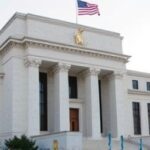In a resilient display of economic fortitude, US Consumer spending climbed 1.3% in October, outpacing expectations and underscoring the strength of the American shopper even as inflation continued to erode purchasing power. This robust uptick in retail activity, reported by the US Census Bureau, signals continued momentum in the US economy, providing a buffer against rising prices for essentials like groceries and gasoline.
The data, released on Wednesday, revealed that total retail and food services sales reached $709.3 billion, adjusted for seasonal variations but not inflation, marking the highest monthly figure since records began in 1992. This growth came despite a year-over-year inflation rate hovering around 3.7%, which has squeezed household budgets and prompted the Federal Reserve to maintain its cautious stance on interest rates.
Retail Sector Breakdown Shows Gains Across Key Categories
Delving into the specifics, October’s Consumer spending boom was driven by broad-based gains in the retail sector. Electronics and appliance stores led the charge with a 2.1% increase, fueled by holiday pre-shopping and promotions on big-ticket items like televisions and laptops. Meanwhile, motor vehicle dealers saw a 1.8% rise, as consumers capitalized on incentives from automakers amid stabilizing supply chains post-pandemic disruptions.
Food services and drinking places, a bellwether for discretionary spending, posted a 1.5% gain, reflecting Americans’ willingness to dine out despite higher menu prices. Grocery stores, however, experienced more modest growth of 0.8%, as inflation in food costs—up 1.1% from September—tempered volume purchases. Health and personal care stores bucked the trend with a 1.2% uptick, highlighting ongoing demand for wellness products in an era of heightened health awareness.
- Electronics and Appliances: +2.1%, boosted by Black Friday anticipation
- Automotive: +1.8%, supported by dealer discounts
- Food Services: +1.5%, indicating social spending resilience
- Grocery: +0.8%, impacted by persistent food inflation
- General Merchandise: +1.0%, with big-box retailers like Walmart reporting strong online sales
These figures paint a picture of selective but steadfast Consumer spending, where shoppers are prioritizing value and essentials while still indulging in non-essentials when deals align. Retail analysts note that e-commerce played a pivotal role, with online sales jumping 1.7%, continuing a trend accelerated by the COVID-19 era.
Inflation Challenges Test Consumer Confidence in US Economy
Despite the positive headlines, inflation remains the elephant in the room for the US economy. The Consumer Price Index (CPI) for October showed a 0.1% monthly increase, pushing the annual rate to 3.2%—down from summer peaks but still above the Federal Reserve’s 2% target. Core inflation, excluding volatile food and energy, held steady at 4.1%, signaling sticky price pressures in services like housing and healthcare.
Consumers are feeling the pinch: A recent survey by the Conference Board indicated that consumer confidence dipped slightly to 102.5 in October, with inflation cited as the top concern by 45% of respondents. “Rising prices are forcing families to rethink their budgets,” said Dr. Elena Ramirez, an economist at the Brookings Institution. “Yet, wage growth averaging 4.2% year-over-year has provided some cushion, allowing spending to persist.”
In the retail space, this tension is evident. Apparel sales grew only 0.5%, as clothing prices rose 0.3% amid supply chain costs from overseas manufacturing. Furniture and home furnishings saw a 1.1% increase, but experts attribute this to pent-up demand from home improvement projects rather than unchecked exuberance. Gasoline stations reported flat sales, with pump prices averaging $3.45 per gallon nationally—down from summer highs but still 20% above pre-pandemic levels.
The interplay between consumer spending and inflation has broader implications for the US economy. Strong retail performance helps offset weaknesses in manufacturing, where the ISM index fell to 46.7 in October, indicating contraction. This dichotomy underscores a service- and consumption-driven recovery, with personal consumption expenditures (PCE) expected to contribute 70% to fourth-quarter GDP growth.
Federal Reserve Eyes Data as Interest Rate Decisions Loom
The Federal Reserve is closely monitoring these trends as it grapples with its dual mandate of price stability and maximum employment. Chair Jerome Powell, in recent testimony before Congress, emphasized that “consumer spending remains a bright spot, but we must remain vigilant against inflationary risks.” The October data bolsters the case for a potential pause in rate hikes, with markets pricing in a 75% chance of holding rates steady at the December meeting.
Economists from Goldman Sachs projected that this spending surge could add 0.4 percentage points to Q4 GDP, helping the US economy avoid recession territory. However, they caution that if inflation doesn’t cool further, the Fed might resume hikes in early 2024. “The retail resilience is encouraging, but it’s not invincible,” noted Mark Zandi, chief economist at Moody’s Analytics. “Holiday spending will be the real test—will consumers max out credit cards, or pull back?”
Supporting this view, credit card debt hit a record $1.08 trillion in Q3, per the New York Fed, with delinquency rates ticking up to 3.2%. Yet, savings rates remain above historical averages at 3.8%, providing a buffer for many households. Government stimulus from earlier in the year, including expanded child tax credits, continues to trickle into spending patterns.
Sector Experts Highlight Holiday Outlook for Retail Boom
Looking ahead, retail executives are optimistic about the holiday season, which typically accounts for 20% of annual sales. National Retail Federation (NRF) forecasts holiday consumer spending to reach $936.4 billion from November through January, a 3.5% increase from last year. This projection hinges on October’s momentum, with early Black Friday deals already driving traffic to stores and websites.
“Consumers are deal-hunters this year, but they’re still spending,” said Stefanie Jay, vice president of industry and research at NRF. “Promotions on gifts and experiences will sustain the October trend.” E-commerce giants like Amazon and Target reported preliminary figures showing double-digit online growth, while brick-and-mortar stores benefit from experiential shopping, such as in-store events.
Regional variations add nuance: Spending in the Northeast surged 1.6%, buoyed by urban recovery, while the South lagged at 1.0% due to hurricane recovery efforts in states like Florida. Demographically, millennials and Gen Z are leading discretionary purchases, with 62% planning to increase holiday budgets per a Deloitte survey, focusing on sustainable and tech-savvy products.
Challenges persist, however. Labor shortages in retail, with 400,000 unfilled jobs nationwide, could strain operations during peak season. Supply chain snarls, though improved, still pose risks for imported goods like toys and electronics, potentially reigniting price pressures.
Implications for Broader Economic Growth and Policy Shifts
As the year winds down, October’s consumer spending data reinforces the US economy’s soft landing narrative. With unemployment at a historic low of 3.9% and job additions averaging 150,000 monthly, the labor market’s strength underpins spending power. This resilience could influence fiscal policy, with discussions in Washington about extending tax cuts or boosting infrastructure spending to sustain growth.
Internationally, the US’s robust retail performance contrasts with slowdowns in Europe and China, positioning America as a global growth engine. Trade partners like Canada and Mexico may see spillover benefits from increased US imports. For investors, the data favors consumer cyclical stocks, with the S&P 500 Retail ETF up 2% in after-hours trading following the release.
Moving into 2024, analysts anticipate consumer spending to moderate to 2.5% growth if inflation eases to 2.5%. The Fed’s path will be crucial: A dovish pivot could unleash pent-up demand, while persistent inflation might crimp it. Ultimately, the American consumer’s adaptability—balancing budgets amid rising costs—will dictate the trajectory of the US economy, ensuring that October’s spark ignites a steady flame rather than a fleeting flare.









